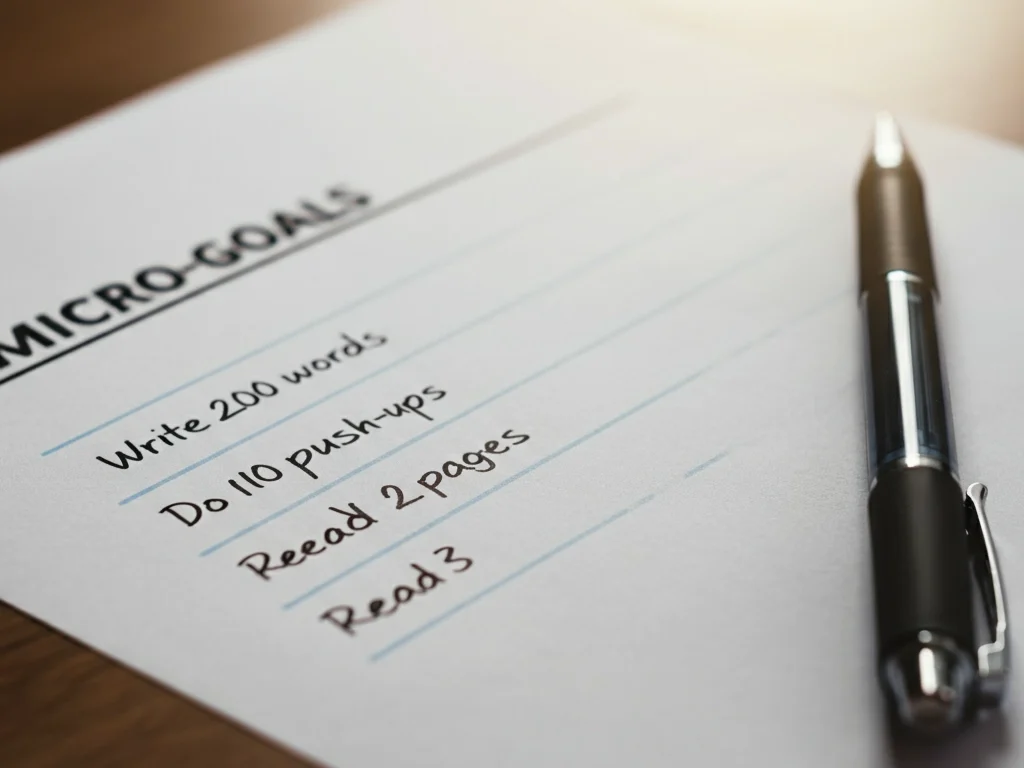Instantly Improve Yourself with This One Powerful Trick!
Self-improvement is one of the most fulfilling yet challenging journeys you can undertake. At its core, self-improvement is about becoming a better version of yourself, whether it’s physically, mentally, emotionally, or professionally. People usually start with great enthusiasm—determined to build new habits, hit ambitious goals, or overhaul their mindset entirely. But here’s the truth—making lasting changes is not always easy.
Often, the excitement wears off, motivation fades, and something as simple as procrastination can derail progress. You might skip a day at the gym, fall back into an old habit, or feel overwhelmed by the sheer size of what you’re trying to achieve. Sound familiar? Trust me, you’re not alone. The good news is that there’s a highly effective trick to transform your self-improvement efforts instantly. Enter micro-goals—small, achievable steps that progress you toward your bigger dreams.
This simple yet profound method works every time because it removes the roadblocks of overwhelm, keeps you motivated, and enables real progress. Let’s break down why micro-goals are a game-changer and how you can start using them today.
The Power of Micro-Goals
A micro-goal is exactly what it sounds like—a super-tiny, specific goal. At first glance, a small goal may not seem groundbreaking, but here’s the magic behind it. Your brain thrives on immediate rewards. Every time you achieve something, no matter how small, your brain releases dopamine—the feel-good chemical. By focusing on micro-goals, you create a cycle of accomplishment and positivity that keeps you moving forward, one small win at a time.
For example, if your ultimate goal is to write a book, a micro-goal could be as simple as writing 200 words a day. It’s not overwhelming, doesn’t seem impossible, and yet it builds momentum toward your larger dream. Meanwhile, crossing that small task off your to-do list every day gives you a sense of progress that fuels motivation.
Still not convinced? Research supports this approach. According to BJ Fogg, a behavior scientist at Stanford University, “tiny habits” are the foundation for changing behavior sustainably. His studies show that starting small creates patterns that effortlessly grow over time, leading to long-term transformation.

Why Micro-Goals Work
Micro-goals have such an instant impact because they trick you into taking action. Many of us struggle to begin when a task feels daunting. But when the hurdle is lowered—say organizing one drawer instead of the whole house—you’re more likely to start. And once you start, something wonderful happens—you gain momentum.
Another reason micro-goals are so effective is they combat the “all-or-nothing” mindset. Often, people give up on self-improvement because they think, “If I can’t give it 100%, why bother?” Micro-goals replace that with a mindset of progress over perfection. That’s a huge shift!
Finally, they eliminate a common psychological barrier called decision fatigue. When you’re faced with a mountain of tasks, deciding what to tackle first can feel paralyzing. Micro-goals shrink that decision-making process into something manageable, allowing you to act with clarity.
How to Set Micro-Goals for Instant Results
The beauty of micro-goals is their simplicity, but here’s how to make sure you set them up for success:
- Be Specific: Ambiguous goals like “exercise more” or “be productive at work” are too vague. Break them down into specific tasks like, “Do ten push-ups every morning” or “Write one email before lunch.”
- Make Them Small: The smaller, the better. Instead of reading an entire chapter of a book, aim for reading two pages. Tiny steps may feel insignificant, but they add up faster than you think.
- Tie Them to Existing Habits: This technique is known as habit stacking. For example, if you want to meditate daily, attach the goal to something you already do, like making coffee. “While I wait for my coffee to brew, I’ll meditate for one minute.”
- Reward Yourself: Celebrate small wins. Even if it’s a mental high-five or checking off a box on your list, the reward reinforces the habit.
- Adjust as Needed: Micro-goals are flexible. If something feels too easy or too hard, tweak it. The idea is to challenge yourself just enough to stay engaged.
Real-Life Example
A friend of mine, Sarah, had a goal of running a marathon. She had tried and failed multiple times because the idea of running 26.2 miles felt insurmountable. This time, she tried starting with tiny steps. Her micro-goal? Running for 5 minutes each day. That’s it.
Within weeks, 5 minutes grew to 10, then 15. Before she knew it, she was running full 5K distances with ease. The best part is, by focusing on running just 5 minutes, she eliminated the pressure of having to “train like a marathon runner.” That small habit unlocked her potential and boosted her confidence, and months later, she crossed the finish line of her first marathon.
Your Turn to Take Action
If you’re ready to see instant progress in your self-improvement, it’s time to put micro-goals into action. Start small—think of one area in your life where you’ve been struggling or procrastinating. Now, break it down into the tiniest step possible.
Want to start exercising? Commit to doing one push-up. Looking to improve your mental health? Jot down three things you’re grateful for. Trying to improve your diet? Drink one extra glass of water today. These small wins may seem too simple to be life-changing—but that’s exactly what makes them so powerful.
The Takeaway
Self-improvement doesn’t have to feel like a monumental challenge. Micro-goals give you the instant boost you need to take action, build momentum, and stay consistent. They help you replace procrastination with progress and self-doubt with self-belief. Whether you want to get healthier, advance in your career, or find more joy in life, micro-goals can get you there—one small step at a time.
Remember, the secret to change is in starting small. Try it today, and before you know it, those tiny steps will lead to giant leaps. The key isn’t perfection; it’s progress.
Now, go set your first micro-goal. Your future self is already thanking you.







